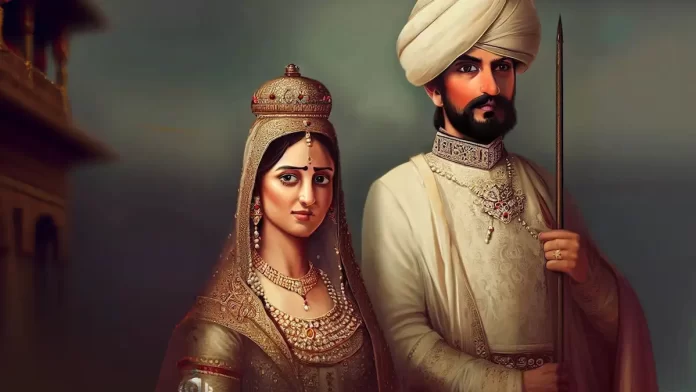In the annals of history, there are stories that transcend boundaries and bring together cultures in unexpected ways.
One such tale is that of Rahmat Banu Begum, the Ahom princess who married a Mughal prince.
Her life is a testament to the complexities of politics, power, and love that shaped the Indian subcontinent during the 17th century.
Rahmat Banu Begum, originally known as Ramani Gabharu, was born into the royal family of the Ahom kingdom, located in present-day Assam, India.
She was the only daughter of Swargadeo Jayadhwaj Singha, the powerful king of the Ahom Dynasty, and his wife Pakhori Gabharu, the daughter of Momai Tamuli Borbarua.
Her lineage boasted of illustrious figures, including her uncle Lachit Borphukan and Laluksola Borphukan, both celebrated for their valiant efforts in the Battle of Saraighat against the Mughal forces.
However, Ramani Gabharu’s life took an unexpected turn during the Ahom-Mughal Wars. After the Mughal emperor Shah Jahan fell sick in 1658, a fierce battle of succession ensued amongst his four sons.
Taking advantage of the resulting chaos, the Ahom Jayadhwaj Singha occupied a large parts of Southern Assam, which had earlier been integrated with the Bengal Province of Mughal India.
However, after Aurangzeb won the battle of Mughal succession and consolidated his rule, he started a policy of reasserting his control over lost territories.
Thus, in January, 1662, Bengal Governor Mir Jumla began his campaign against the Ahoms to punish them for their repeated incursions into the Mughal frontiers.
Ahoms were soon routed and Swargadeo Jayadhwaj Singha had to sign a peace treaty called Treaty of Ghilajharighat. As per the treaty Swargadeo Jayadhwaj Singha sent his only daughter Ramani Gabharu to the imperial capital.
In Mughal Harem, Ramani Gabharu was treated well and educated with other Mughal princesses. She reportedly converted to Islam and was given the name of Rahmat Banu Begum.
Five years later in May 1668, she was married to Aurangzeb’s favourite son and heir Muhammad Azam Shah with much fanfare. The emperor reportedly distributed gifts worth lakhs of rupees in her honor besides a dowry of Rupees 1,80,000/- at Delhi.
It is to be noted that Prince Muhammad Azam Shah briefly became the Mughal emperor in 1707 after Auragzeb’s Death. However, he lost the subsequent battle of succession with his elder brother Bahadur Shah I and was killed in the Battle of Jajau near Agra. He was later buried in Humayun’s Tomb Delhi.
Nevertheless, the union between the Ahom princess and the Mughal prince symbolised a delicate balance of power and diplomacy between two influential kingdoms.
Meanwhile, back in Assam, the Ahom forces, led by the Lachit Borphukan, were engaged in a relentless struggle against the Mughals. In the famous Battle of Saraighat, they emerged victorious, securing Guwahati from Mughal control. It was a pivotal moment in Ahom history even if short-lived.
However, even in the aftermath of their triumph, the Ahom kingdom faced internal conflicts. Laluksola Borphukan, Rahmat Banu Begum’s maternal uncle soon handed over the hard won Guwahati back to the Mughals. Rahmat Banu Begum reportedly opposed this pact.
The story of Rahmat Banu Begum is one of resilience and determination in the face of adversity. As an Ahom princess thrust into the world of the Mughal court, she navigated the complexities of politics and cultural assimilation.
Although historical records provide limited details about Rahmat Banu Begum’s life after her marriage, her legacy remains woven into the fabric of Assam’s history.
Her marriage to Muhammad Azam Shah served as a bridge between two disparate worlds, showcasing the intricate connections and alliances that shaped the Indian subcontinent.
Rahmat Banu Begum’s story is a testament to the enduring power of love, heritage, and the indomitable spirit of individuals caught between conflicting forces.
Her journey reminds us that history is replete with unexpected alliances and that the human spirit has the capacity to transcend cultural boundaries and forge connections that defy conventional norms.
